Resource leveling is a resource management technique that can help teams better accommodate resource constraints and predict project timelines. It helps avoid poor project planning that often leads to last-minute delays, overworked team members, and cost overruns.
Resource leveling should be a part of every project manager’s toolkit. By optimizing and balancing resources across time, you can avoid unrealistic expectations and determine the earliest possible date to complete your project. Keep reading to find out how to practice good project management by applying this technique.
What is resource leveling?
According to the Project Management Body of Knowledge (PMBOK) Guide, resource leveling is a technique to help you better accommodate resource constraints by adjusting the start and finish dates of a project. In doing so, you can make realistic project deadlines without overworking your team and increasing the total cost of the project.
An example of resource leveling
Let’s explain resource leveling with Project A which has five different tasks. Each of these tasks can be completed by a team member in eight hours, making the entire project possible to complete in 40 hours.
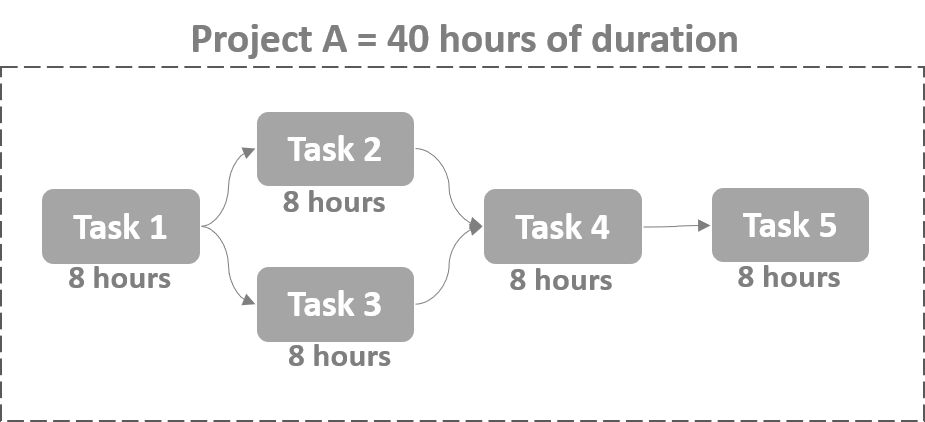
During resource allocation, these five tasks get assigned to two team members – Sally and John – based on their skills. Dividing the 40 working hours between the two team members in the diagram below shows that Project A could be completed in three working days.

But if we break down the diagram below, Sally can’t realistically complete both Task 1 and Task 2 on the first day unless it’s a 16-hour workday. And John can’t start working on Task 3 until the next day since Task 1 will take an entire 8-hour workday. In this scenario, the project can’t be delivered in three days unless you overwork Sally.
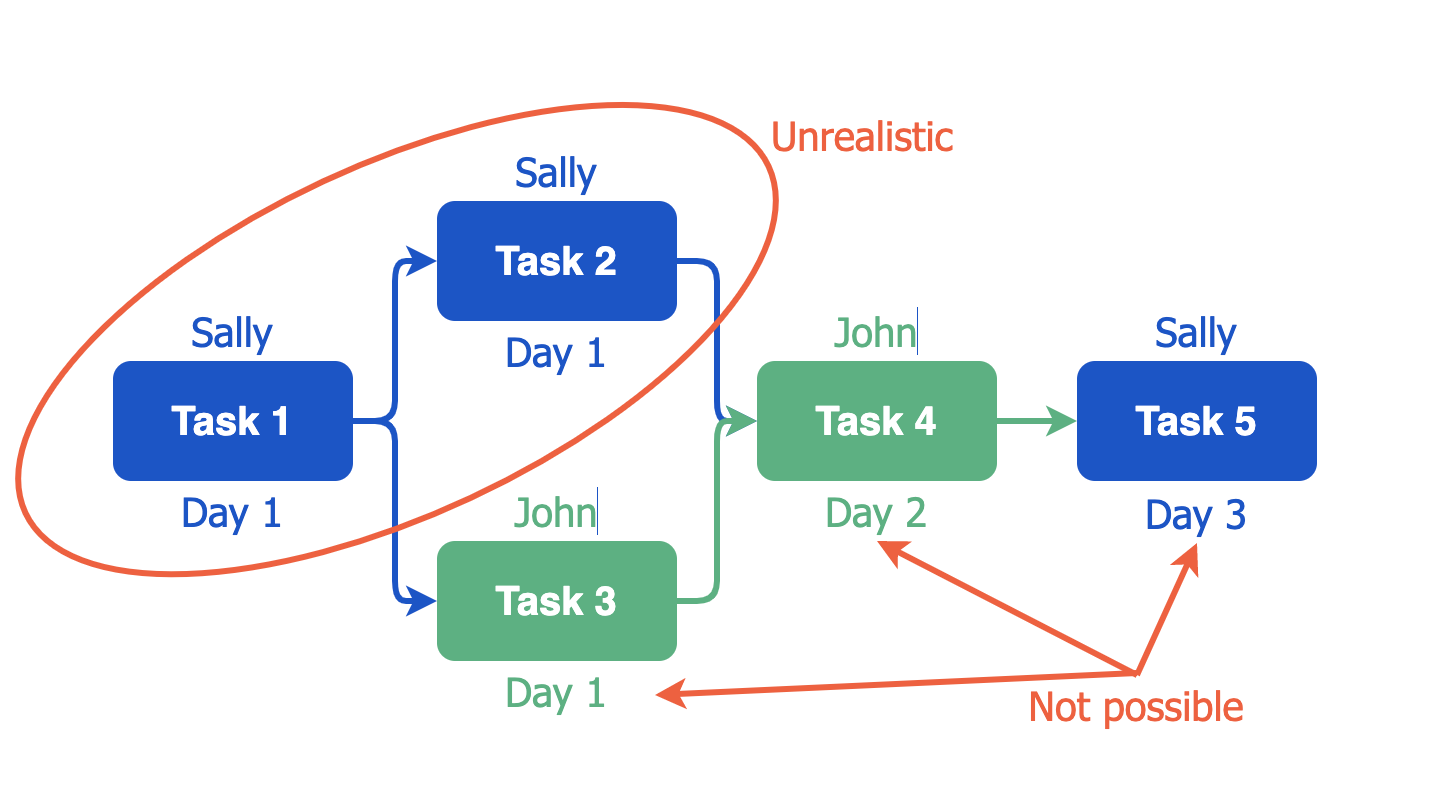
By using the resource leveling technique on Project A, you can see that the earliest it can be done is in four days – without overworking anyone. Applying this technique to your own projects surfaces their faulty assumptions and will most likely convince all project stakeholders to extend deadlines.

Resource leveling gives everyone a realistic, bird’s-eye view of the project and can help teams establish feasible deadlines and assign tasks reasonably.
How resource leveling can help improve work-life balance for team members
Ultimately, resource leveling can help lay the foundation for a healthy work-life balance for your teams. As of 2021, work-life balance was the single most important organizational attribute for employees worldwide. And, not surprisingly, employees who believe they have good work-life balance work 21% harder.

In the original Project A example, Sally would have been required to work at least six hours longer on the first day of the project – well above the typical eight-hour workday.
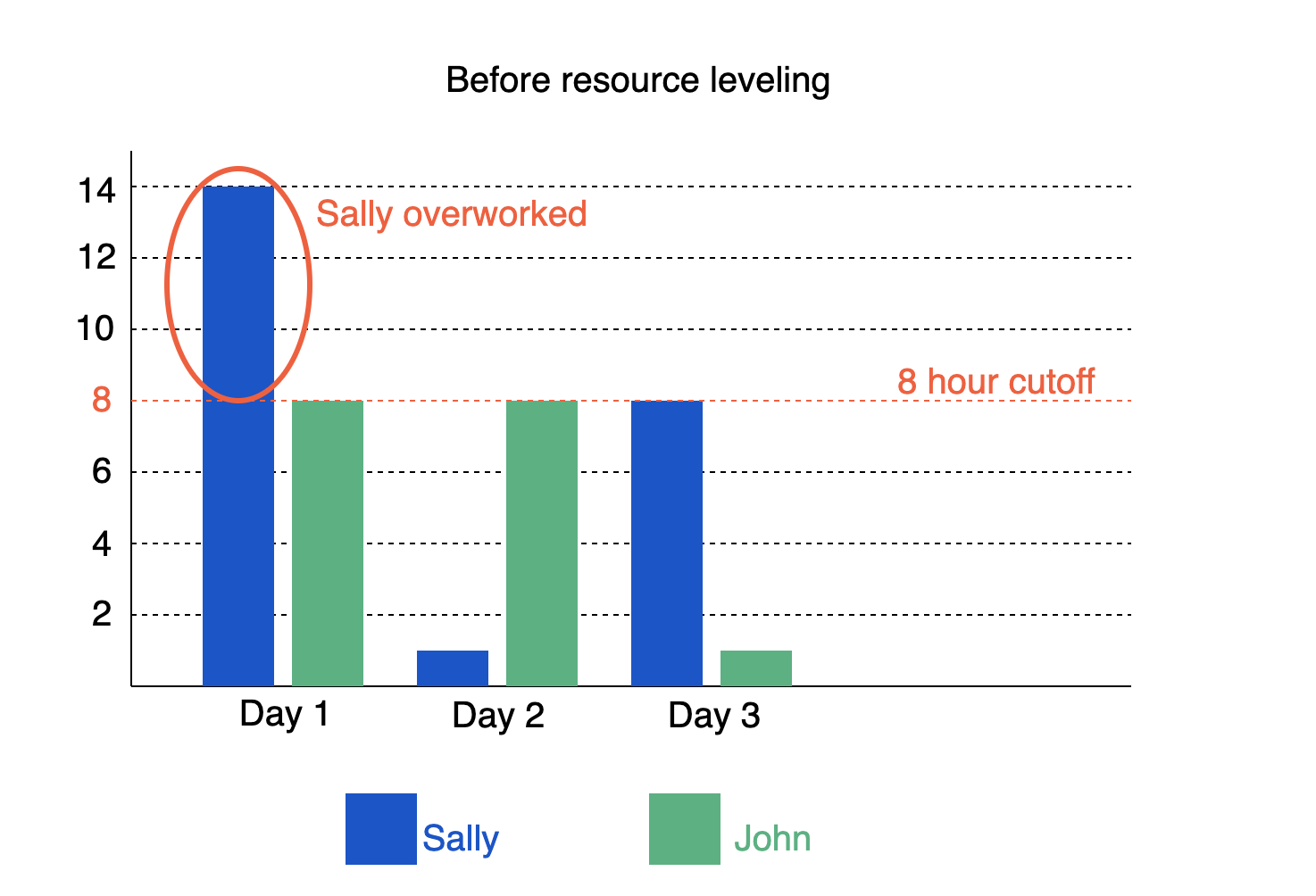
Sally and John now also have buffer days. Buffers can ensure timely project deliveries because they help teams accommodate work that flows beyond the budgeted time.

When you have several tasks like those in Project A, it’s generally a good idea to break them up into smaller subtasks and distribute them more evenly between both team members across all days. This practice is also referred to as resource smoothing.
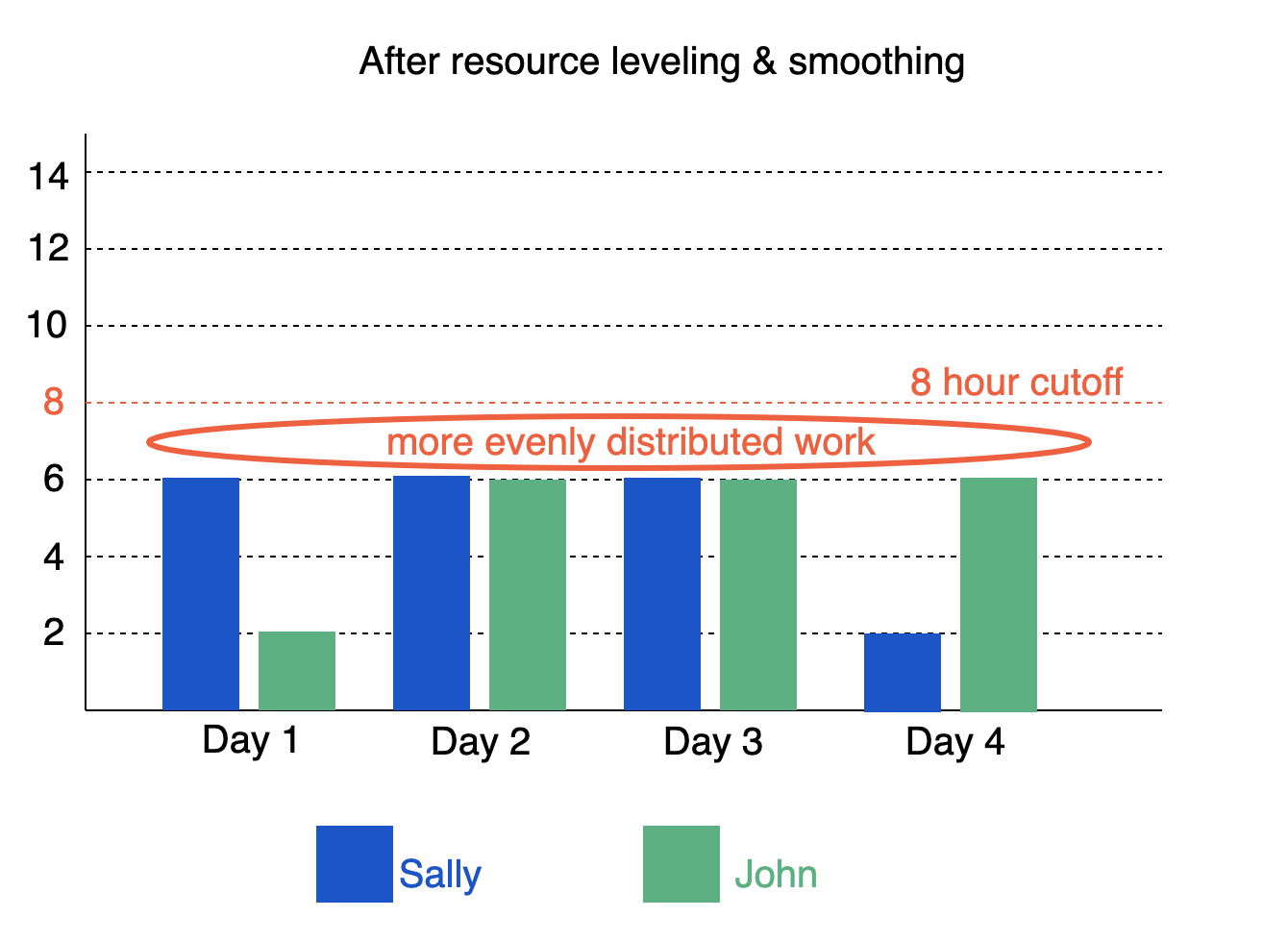
Buffers can also be distributed evenly across all days. Because daily buffers allow extra time to solve any unexpected problems or unforeseen work overruns, they can significantly reduce the number of overtime hours and stress. Resource leveling and smoothing provide teams with regular workday hours and distributed daily workloads – both contribute to better work-life balance.
How do resource allocation, resource leveling, and resource smoothing work together?
Resource allocation, leveling, and smoothing work together to optimize resource management in a three-step process.
- Resource allocation assigns team members to tasks to ensure the work gets done, leaving out the impact on individual team members.
- Resource leveling ensures that workloads don’t exceed resource limits, so nobody is working more hours than they should.
- Resource smoothing then helps you distribute workloads evenly with adequate daily buffers.
During the planning phase, resource allocation helps you understand which team member is best suited to take on each particular task. Effective resource allocation considers project costs, resource availability, skills required, and project outcomes.
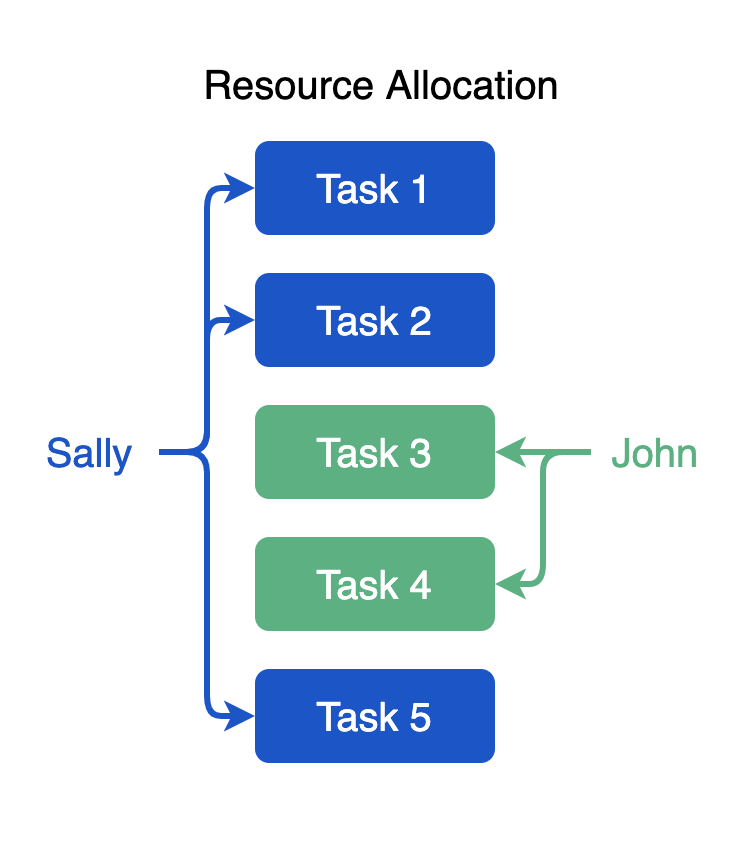
But while your project is in motion, unexpected things can happen like delays or insufficient budgets. This is where resource leveling comes in handy. It can help you avoid such conflicts, or manage the resource constraints that they create with more realistic expectations.
After resource leveling, resource smoothing can help you even out the high and low workloads assigned to each team member. In other words, it helps keep your resources within their predefined limits. For example, in Project A, resource smoothing distributes the workloads of Sally and John to keep them within a predefined six-hour daily limit.
How to select a resource leveling strategy in the real world
The real world is too unpredictable for neatly bound theoretical projects to go perfectly as planned. But you can practice resource leveling to prevent unexpected delays and scope creep. The right resource leveling strategy can help you extend deadlines, garner more resources, optimize available resources, and narrow down your project’s scope.
Project deadlines and available resources are typically the two most important variables in any project, so we’ve mapped them out in the grid below to show four different scenarios. The rows represent different deadline options (extended vs same) and the columns show us different scenarios for resourcing.
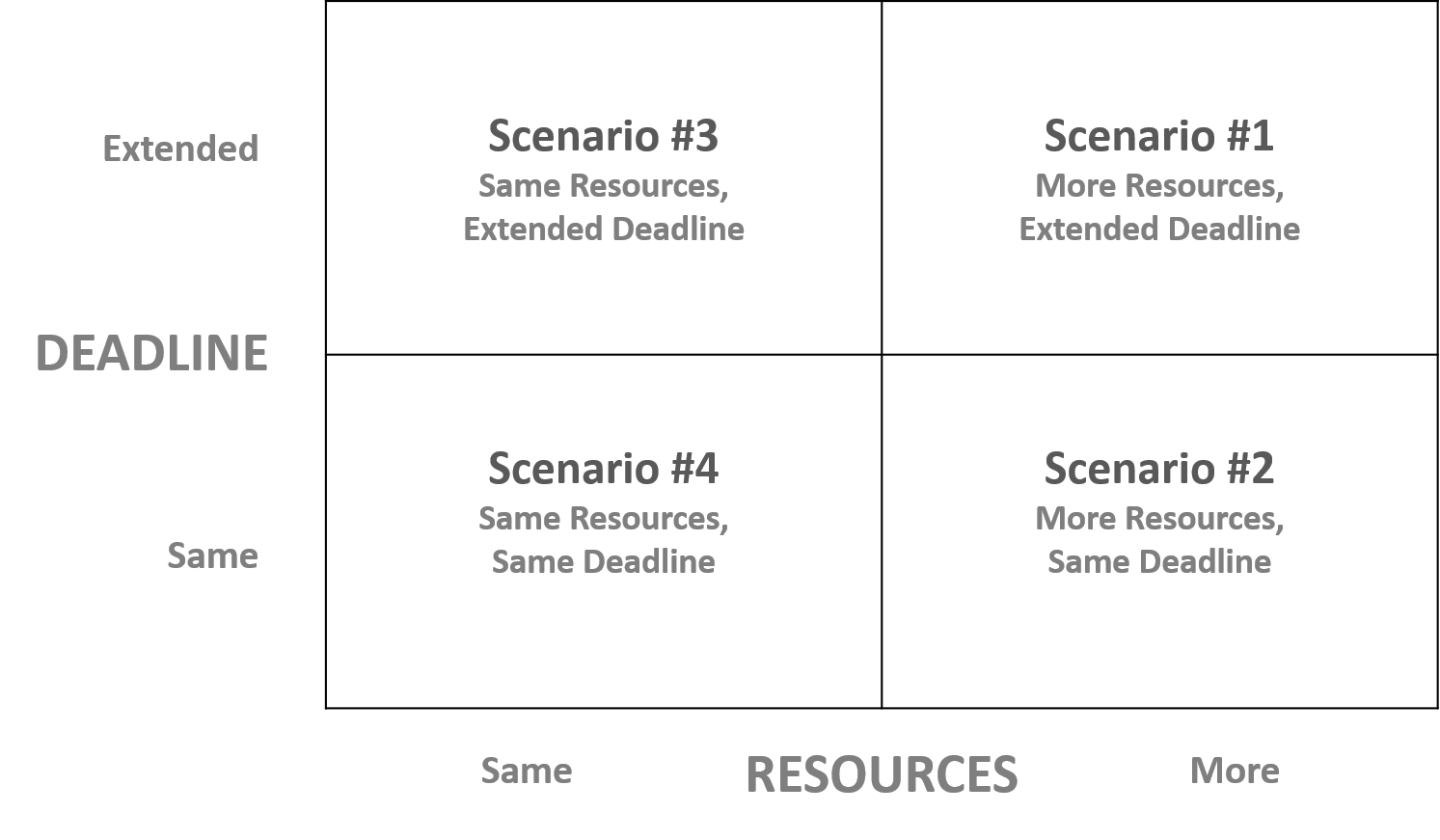
Scenario 1: Add more resources and extend the deadline
With more resources and time, you have a better chance of delivering high-quality projects. But you need to help your stakeholders understand why the initial project assumptions were faulty. Revisit your resource allocation plans to accommodate the additional resources effectively.
Scenario 2: Add more resources to meet the same deadline
With critical projects, you may get more resources without a deadline extension. Use a “crashing” strategy, bringing in new team members to deal with the additional workload. But when senior team members train new ones, their work outcomes can get affected due to the time spent training instead of working on deliverables. That’s why you should allocate new members only to the tasks that demand the least additional effort.
Scenario 3: Use the same resources and extend the deadline
Get your stakeholders to approve the deadline extension as early as possible. Deadline extensions don’t require training or managing new team members. Project A showed how an extension resolved work overloads.
Scenario 4: Use the same resources to meet the same deadline
By reducing project scope, you can resolve work overloads even without additional resources or deadline extensions. The key is to ruthlessly remove all low-value tasks and limit the project scope to only the most critical tasks. You might also need to fast-track a project by executing as many tasks as possible at the same time, meaning you’ll need to have multiple team members working at once.
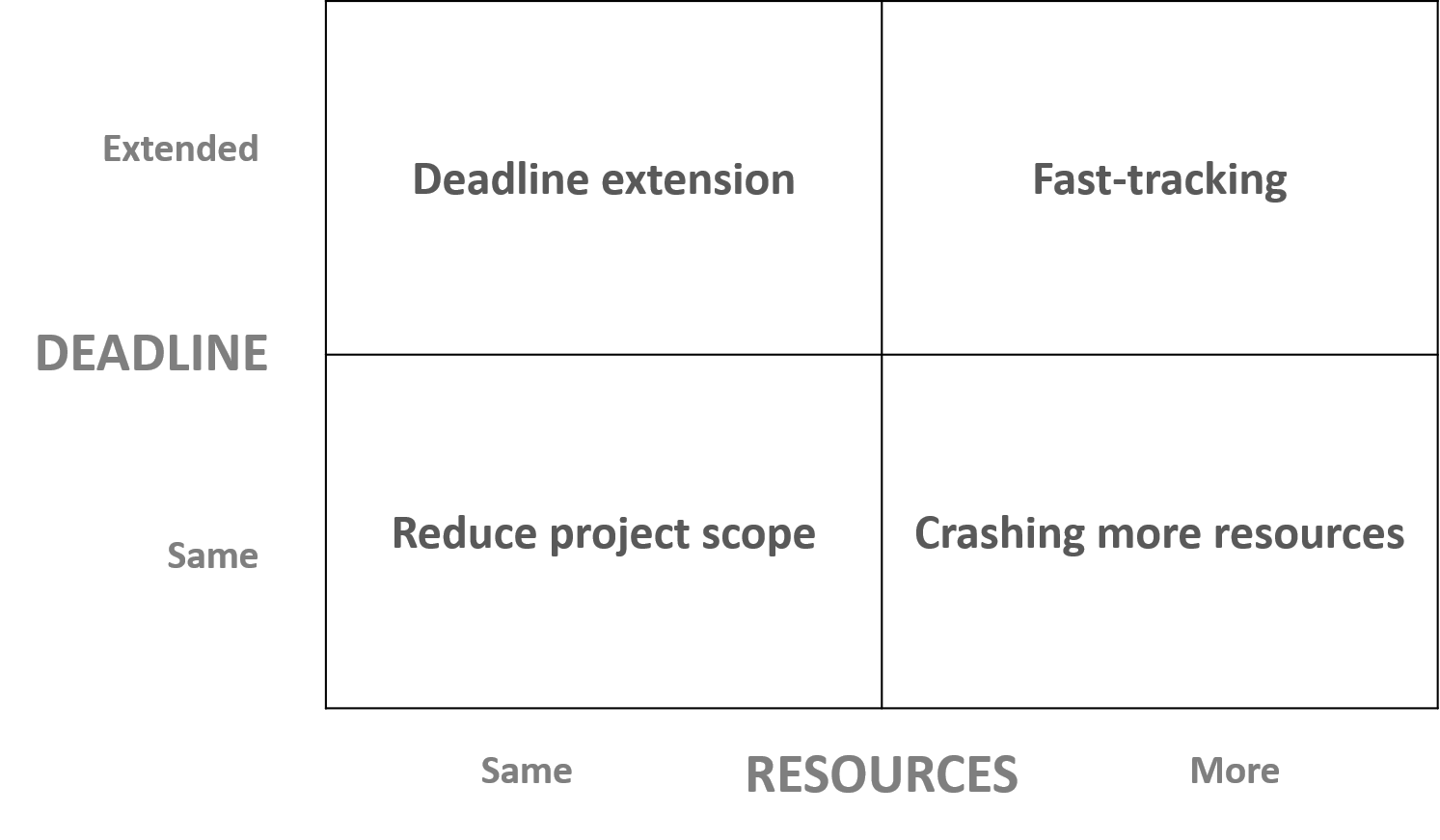
The four strategies above can help you resolve resource conflicts when they’re applied to the most critical and time-consuming project activities.
Tools to help with resource management
Switching to a modern project management tool, such as Jira can help you level up your resource management processes. Atlassian marketplace apps like Activity Timeline, ProScheduler, and Project, Resource & Cost Management can work with Jira to help you plan, track, and manage your resources more effectively.
If you’re looking for a tool to help you with resource allocation, consider using Activity Timeline. This app can help you select the right people for each task based on their skills. The app can also estimate task completion dates based on a number of factors. And it can show you the workload calendars of your team members to help you identify overworked employees.
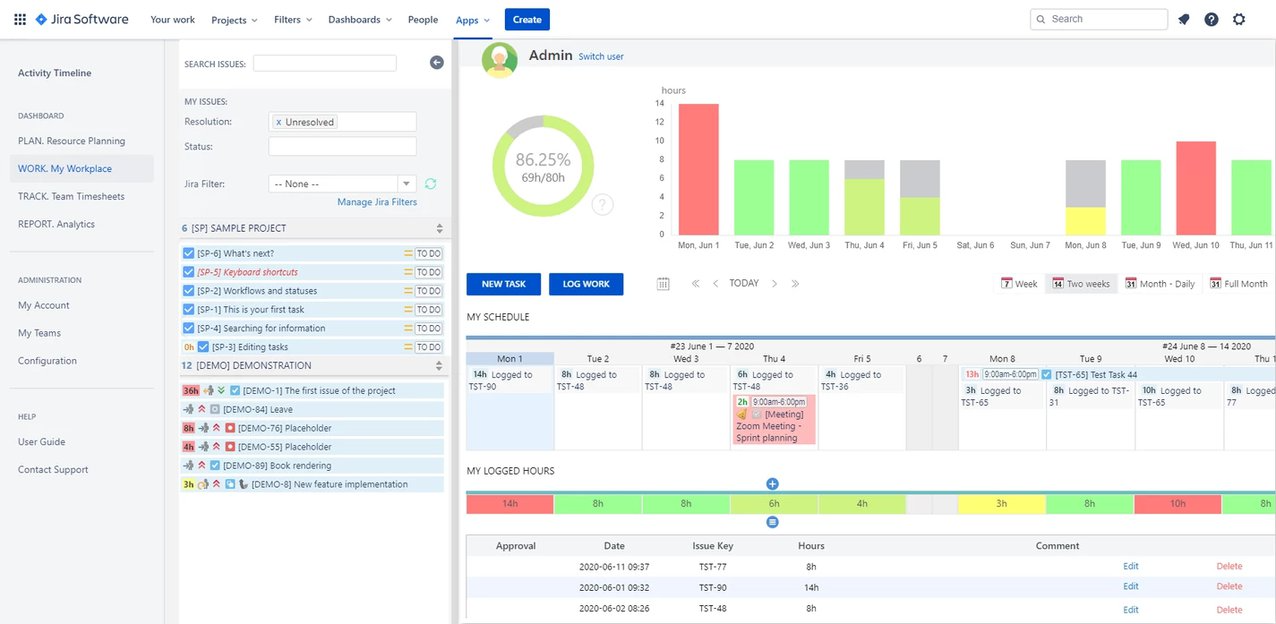
Want a bird’s-eye view of your project schedule, workload, and resource utilization? ProScheduler offers a powerful unified Gantt chart view that allows you to directly manage Jira issues across multiple projects from a spreadsheet-like tabular list view. Based on resource constraints, it allows you to find the ideal project start and completion dates within a few minutes.

If you need support at different stages of your project resource management process, try using the Project, Resource & Cost Management app. It boasts a smart algorithm that takes into account the technical and soft skills of all your employees to help you find the most suitable resources for a specific project with just a single click.

The Atlassian marketplace has more than 40 of these apps to help optimize your resource management processes.
Software-driven resource management can help your company grow
A McKinsey study found that project managers and companies who applied a software decision-making technique to their resource planning were 36% more likely to outgrow their competitors because of their ability to perform scenario analyses.
Using Jira along with Atlassian marketplace apps like Activity Timeline, ProScheduler, and Project, Resource & Cost Management can help you make more informed resource planning decisions.


